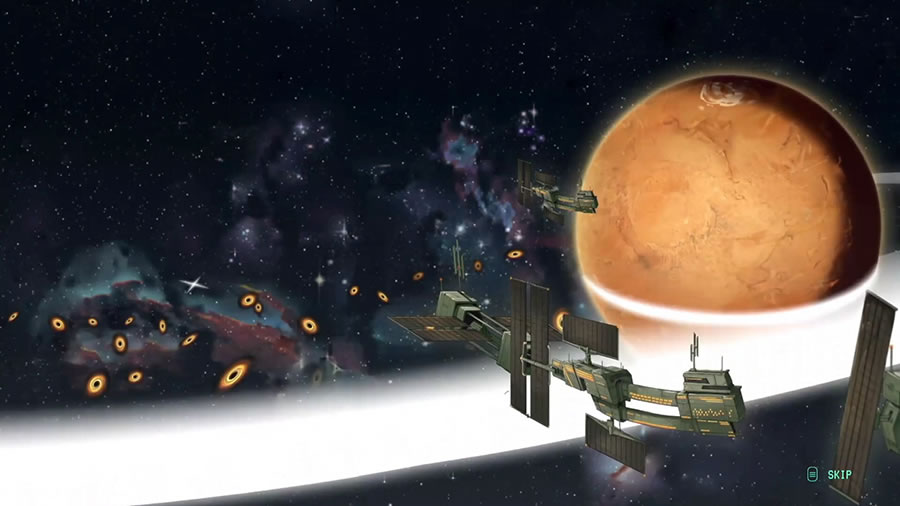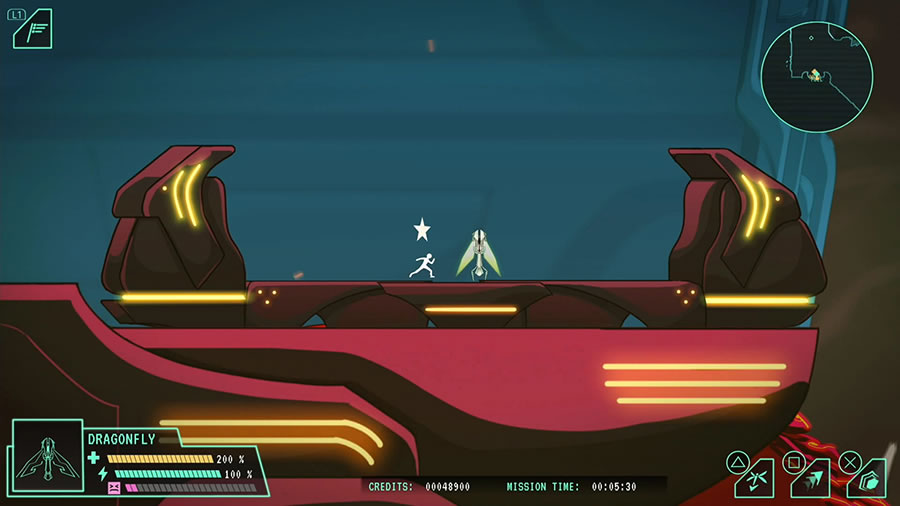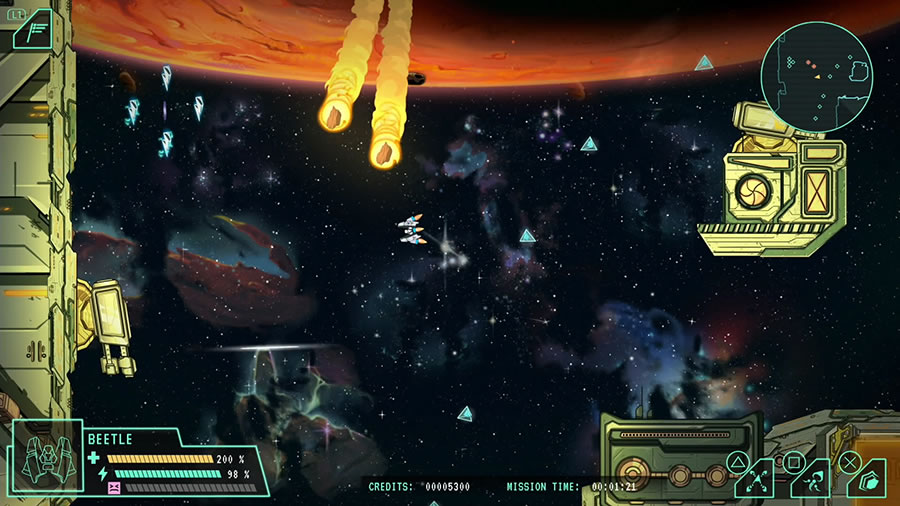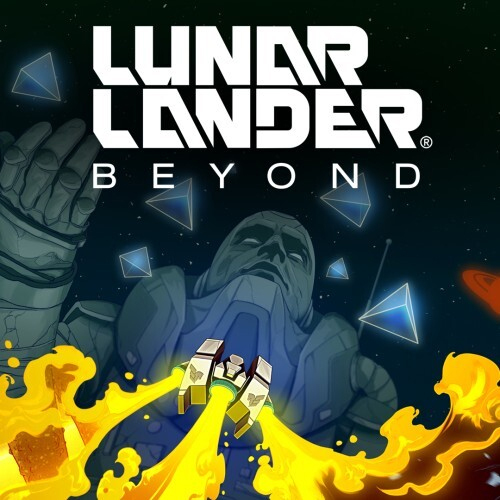- CLASSIC MAGAZINES
- REVIEW CREW
A show recapping what critics thought back
when classic games first came out! - NEXT GENERATION'S BEST & WORST
From the worst 1-star reviews to the best
5-stars can offer, this is Next Generation! - NINTENDO POWER (ARCHIVE)
Experience a variety of shows looking at the
often baffling history of Nintendo Power! - MAGAZINE RETROSPECTIVE
We're looking at the absolutely true history of
some of the most iconic game magazines ever! - SUPER PLAY'S TOP 600
The longest and most ambitious Super NES
countdown on the internet! - THEY SAID WHAT?
Debunking predictions and gossip found
in classic video game magazines! - NEXT GENERATION UNCOVERED
Cyril is back in this spin-off series, featuring the
cover critic review the art of Next Generation! - HARDCORE GAMER MAGAZING (PDF ISSUES)
Download all 36 issues of Hardcore Gamer
Magazine and relive the fun in PDF form!
- REVIEW CREW
- ELECTRONIC GAMING MONTHLY
- ELECTRONIC GAMING MONTHLY RANKS
From Mario to Sonic to Street Fighter, EGM
ranks classic game franchises and consoles! - ELECTRONIC GAMING MONTHLY BEST & WORST
Counting down EGM’s best and worst reviews
going year by year, from 1989 – 2009! - ELECTRONIC GAMING BEST & WORST AWARDS
11-part video series chronicling the ups and
downs of EGM’s Best & Worst Awards!
- ELECTRONIC GAMING MONTHLY RANKS
- GAME HISTORY
- GAME OVER: STORY BREAKDOWNS
Long-running series breaking down game
stories and analyzing their endings! - A BRIEF HISTORY OF GAMING w/ [NAME HERE]
Real history presented in a fun and pithy
format from a variety of game historians! - THE BLACK SHEEP
A series looking back at the black sheep
entries in popular game franchises! - INSTANT EXPERT
Everything you could possibly want to know
about a wide variety of gaming topics! - FREEZE FRAME
When something familiar happens in the games
industry, we're there to take a picture! - I'VE GOT YOUR NUMBER
Learn real video game history through a series
of number-themed episodes, starting at zero! - GREAT MOMENTS IN BAD ACTING
A joyous celebration of some of gaming's
absolute worst voice acting!
- GAME OVER: STORY BREAKDOWNS
- POPULAR SHOWS
- DG NEWS w/ LORNE RISELEY
Newsman Lorne Riseley hosts a regular
series looking at the hottest gaming news! - REVIEW REWIND
Cyril replays a game he reviewed 10+ years
ago to see if he got it right or wrong! - ON-RUNNING FEUDS
Defunct Games' longest-running show, with
editorials, observations and other fun oddities! - DEFUNCT GAMES QUIZ (ARCHIVE)
From online quizzes to game shows, we're
putting your video game knowledge to the test!- QUIZ: ONLINE PASS
Take a weekly quiz to see how well you know
the news and current gaming events! - QUIZ: KNOW THE GAME
One-on-one quiz show where contestants
find out if they actually know classic games! - QUIZ: THE LEADERBOARD
Can you guess the game based on the classic
review? Find out with The Leaderboard!
- QUIZ: ONLINE PASS
- DEFUNCT GAMES VS.
Cyril and the Defunct Games staff isn't afraid
to choose their favorite games and more! - CYRIL READS WORLDS OF POWER
Defunct Games recreates classic game
novelizations through the audio book format!
- DG NEWS w/ LORNE RISELEY
- COMEDY
- GAME EXPECTANCY
How long will your favorite hero live? We crunch
the numbers in this series about dying! - VIDEO GAME ADVICE
Famous game characters answer real personal
advice questions with a humorous slant! - FAKE GAMES: GUERILLA SCRAPBOOK
A long-running series about fake games and
the people who love them (covers included)! - WORST GAME EVER
A contest that attempts to create the worst
video game ever made, complete with covers! - LEVEL 1 STORIES
Literature based on the first stages of some
of your favorite classic video games! - THE COVER CRITIC
One of Defunct Games' earliest shows, Cover
Critic digs up some of the worst box art ever! - COMMERCIAL BREAK
Take a trip through some of the best and
worst video game advertisements of all time! - COMIC BOOK MODS
You've never seen comics like this before.
A curious mix of rewritten video game comics!
- GAME EXPECTANCY
- SERIES ARCHIVE
- NINTENDO SWITCH ONLINE ARCHIVE
A regularly-updated list of every Nintendo
Switch Online release, plus links to review! - PLAYSTATION PLUS CLASSIC ARCHIVE
A comprehensive list of every PlayStation
Plus classic release, including links! - RETRO-BIT PUBLISHING ARCHIVE
A regularly-updated list of every Retro-Bit
game released! - REVIEW MARATHONS w/ ADAM WALLACE
Join critic Adam Wallace as he takes us on a
classic review marathon with different themes!- DEFUNCT GAMES GOLF CLUB
Adam Wallace takes to the links to slice his way
through 72 classic golf game reviews! - 007 IN PIXELS
Adam Wallace takes on the world's greatest spy
as he reviews 15 weeks of James Bond games! - A SALUTE TO VAMPIRES
Adam Wallace is sinking his teeth into a series
covering Castlevania, BloodRayne and more! - CAPCOM'S CURSE
Adam Wallace is celebrating 13 days of Halloween
with a line-up of Capcom's scariest games! - THE FALL OF SUPERMAN
Adam Wallace is a man of steel for playing
some of the absolute worst Superman games! - THE 31 GAMES OF HALLOWEEN
Adam Wallace spends every day of October afraid
as he reviews some of the scariest games ever! - 12 WEEKS OF STAR TREK
Adam Wallace boldly goes where no critic has
gone before in this Star Trek marathon!
- DEFUNCT GAMES GOLF CLUB
- DAYS OF CHRISTMAS (ARCHIVE)
Annual holiday series with themed-episodes
that date all the way back to 2001!- 2015: 30 Ridiculous Retro Rumors
- 2014: 29 Magazines of Christmas
- 2013: 29 Questionable Power-Ups of Christmas
- 2012: 34 Theme Songs of Christmas
- 2011: 32 Game Endings of Christmas
- 2010: 31 Bonus Levels of Christmas
- 2009: 30 Genres of Christmas
- 2008: 29 Controls of Christmas
- 2007: 34 Cliches of Christmas
- 2006: 33 Consoles of Christmas
- 2005: 32 Articles of Christmas
- 2004: 31 Websites of Christmas
- 2003: 29 Issues of Christmas
- 2002: 28 Years of Christmas
- 2001: 33 Days of Christmas
- NINTENDO SWITCH ONLINE ARCHIVE
- REVIEW ARCHIVE
- FULL ARCHIVE
Lunar Lander: Beyond
If you’ve been following Atari’s return to prominence, then you may have noticed that it has come in phases. The first phase involved “Recharging” a bunch of classic arcade games, like Centipede, Missile Command and Breakout. These were simple games that played into their arcade roots, while still giving us a more modern video game experience. Now comes phase two, where different developers are given a chance to flesh out the story and lore of some of Atari’s most memorable games. This started with Orbit Studios developing a new Haunted House, and just recently it was revealed that WayForward will be tackling a new Yars sequel. In between those two is Lunar Lander: Beyond, the sophomore release from Dreams Uncorporated. With a massive story, cool cast of characters and a wide variety of stages, is this long-overdue sequel worth the 45-year wait? That’s what we’re about to find out when I review Lunar Lander: Beyond.
Before we go Beyond, let’s first talk about Lunar Lander, the 1979 arcade game from Atari. Released in the wake of NASA’s various Moon missions, this is a game where you use thrusters and smooth piloting skills to land your lunar landing module across increasingly hostile terrain. While moderately popular at the time, the game would quickly be usurped by a more action-packed Atari game called Asteroids. While certainly not the most successful arcade game of its time, Lunar Lander was extremely influential, inspiring a whole genre of games where you have to overcome gravity and other obstacles while parking a spaceship.
Now, 45 years later, Lunar Lander Beyond takes that basic concept and fleshes it out into a real, fully-realized video game, complete with characters you care about and a compelling story that is about a lot more than just landing. It takes place about 150 years into the future, when space exploration is a thing and we’ve colonized planets like Mars and Venus. You’re a new-hire at Pegasus, a corporation that delivers cargo, retrieves resources and taxis people around the different moons and planets.
Your life is forever changed when a series of devastating blackholes mysteriously appear throughout the galaxy, wreaking havoc and mass destruction on the normally peaceful planets. In the blink of an eye, Pegasus goes from a simple courier company to a vital part of the rescue effort. Your job quickly becomes all about flying through harrowing stages in an effort to save the people stranded on a series of different planets, all while learning more about this catastrophic Event.
Lunar Lander: Beyond is being sold as a story-driven follow-up to the classic arcade game, and for good reason. So much of this game revolves around rescuing the right people and watching as they work to not just figure out what is going on, but also to find a solution. We have a fun cast of characters, including a drugged-out doctor, a former ace pilot and a Russian woman who has a general hatred and distrust of Pegasus. What I like about this game is that it allows these characters to speak their mind and bring up important questions, which can make it hard to know who is right and wrong. There are some fun twists and turns in the story, and the voice cast does a good job of keeping things interesting.
This helps when it comes to the levels, which largely center around simple rescue missions. It’s probably too much to call Lunar Lander: Beyond the futuristic sequel to Choplifter, but it can certainly feel like that at times. A lot of the game involves you navigating through mazes and hostile areas in hopes of landing at different bases and safely rescuing the people stranded after the Event. Even when the mission isn’t specifically geared towards rescuing civilians, you’ll often still have an optional quest that will have you saving a pilot, which you can use to run future missions.
There are other types of stages, of course. Early on, the game is mostly about getting used to the lander’s unique controls, which means flying through a bunch of hoops and collecting space credits. Other missions will have you landing at strategic locations in order to gather information or solve a problem. In yet another type of stage, you’ll have to protect a base from falling meteorites, which will mean snagging a shield icon and then ramming them with your ship. Things definitely heat up as you near the last act of the game, but most of the missions will involve searching for items and then performing a successful landing.
When it comes to the original Lunar Lander and games like it, a lot people can be put off by the gameplay. This is a genre that is, by design, fighting against you every step of the way, making what should be simple maneuvers a lot more complicated than they should be. The good news is that Lunar Lander: Beyond has the solution to this problem. While the game starts you out with the kind of thruster-based ship you saw in the original, it doesn’t leave it there. You’ll actually unlock several more ships throughout the course of the game, including one called the Dragonfly that completely changes the way the game is played.
What sets this ship apart from the rest is that you don’t press a button to control the thruster. The idea is to hold the direction you want to move and watch the ship go, which is a lot easier than the other ships, but still requires a bit of a learning curve in order to navigate the narrow passageways of Venus. The important thing is that the Dragonfly gives this game some much-needed variety, allowing you to choose what kind of experience you want. The story tries to suggest that you’ll want to switch between the different ships depending on the mission, but you’ll be able to complete pretty much every mission with every lander, just as long as you have the skills.
It helps that you can find and equip three different special abilities to each of the ships. One of the first you’ll receive is a stabilizer, which will come in clutch when your lander starts going too fast and becomes hard to control. Other attachments include a tractor beam, a dash move, a temporary shield and even a move where you can swap out health for extra fuel. These useful abilities are hidden in different stages, which will teach you to thoroughly explore every stage before landing. Best of all, you can swap these upgrades out at any time, and they are always mapped to the same three buttons.
There are some other interesting ideas at play, though not all of them are as fully-conceived as the rest of the game. A good example of this is the pilot’s sanity, which is something you’ll need to keep track of, alongside the ship’s fuel and structural integrity. When you crash into things, it will begin to spook the pilots, which can ultimately lead to a type of space madness where you’ll start to see horrific images of eyes, mouths and ... elephants? The way to solve this problem is to send that pilot to see the doctor, where they’ll be out of commission for a few missions. This means that you’ll need to choose a different, often less-experienced pilot to fill in for a while. That’s cool in concept, but it never really hinders you as much as it probably should.
Another problem involves the space credits you collect along the way. Outside of a couple very specific medical procedures, there’s basically nothing to spend your money on. All of the ships and abilities are unlocked just by playing the game, and there’s nothing to upgrade on your lander. I finished the game with nearly 3 million credits, none of which I ever needed to spend. That’s a shame, since so much of the exploration is focused on finding these space credits. I don’t care if it’s painting the ship different colors or adding silly effects to its trail, I needed something (anything!) to spend my money on.
Visually, the game looks good and I like the techno-filled soundtrack. The levels are all incredibly bite-sized, with none taking more five or six minutes to complete, and most barely taking that long. The challenge ramps up quite a bit in the later stages, but it never feels cheap and there are plenty of checkpoints in the longer levels. That said, some of the missions are a bit repetitive and the game probably could use two or three more objectives, just to shake things up a bit.
The ”beyond” in the name is no joke, because this game goes about as far beyond the original as you can go without losing sight of what made that first game so memorable. Between the genuinely compelling story, the likable characters and the lengthy campaign full of missions to complete, I can’t imagine any Lunar Lander fans being disappointed by this overly ambitious sequel. Even those who might normally shy away from this genre will find a lot to like in Lunar Lander: Beyond. I like this direction for Atari and hope to see more of these story-driven sequels and reboots in the future.
HOME |
CONTACT |
NOW HIRING |
WHAT IS DEFUNCT GAMES? |
NINTENDO SWITCH ONLINE |
RETRO-BIT PUBLISHING
Retro-Bit |
Switch Planet |
The Halcyon Show |
Same Name, Different Game |
Dragnix |
Press the Buttons
Game Zone Online | Hardcore Gamer | The Dreamcast Junkyard | Video Game Blogger
Dr Strife | Games For Lunch | Mondo Cool Cast | Boxed Pixels | Sega CD Universe | Gaming Trend
Game Zone Online | Hardcore Gamer | The Dreamcast Junkyard | Video Game Blogger
Dr Strife | Games For Lunch | Mondo Cool Cast | Boxed Pixels | Sega CD Universe | Gaming Trend
Copyright © 2001-2024 Defunct Games
All rights reserved. All trademarks are properties of their respective owners.
All rights reserved. All trademarks are properties of their respective owners.
































